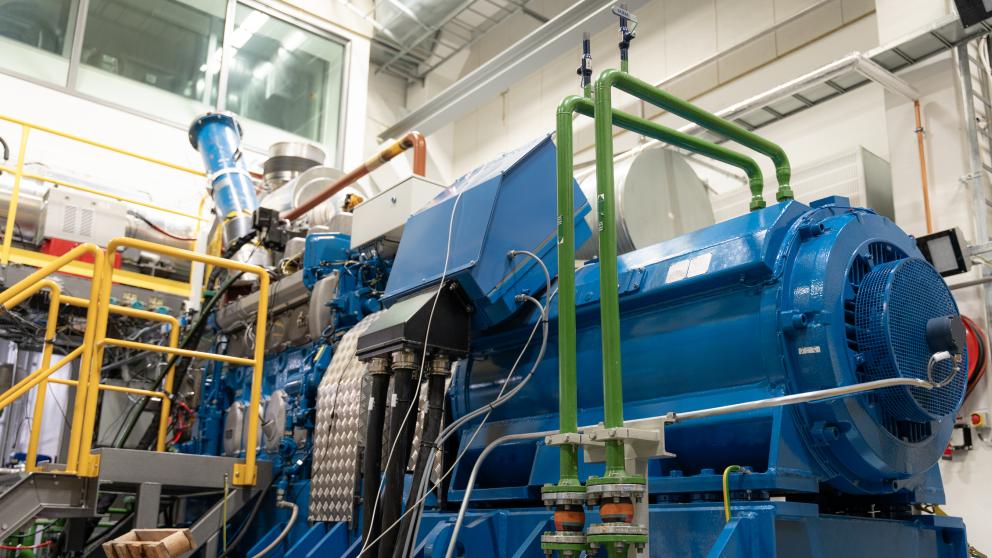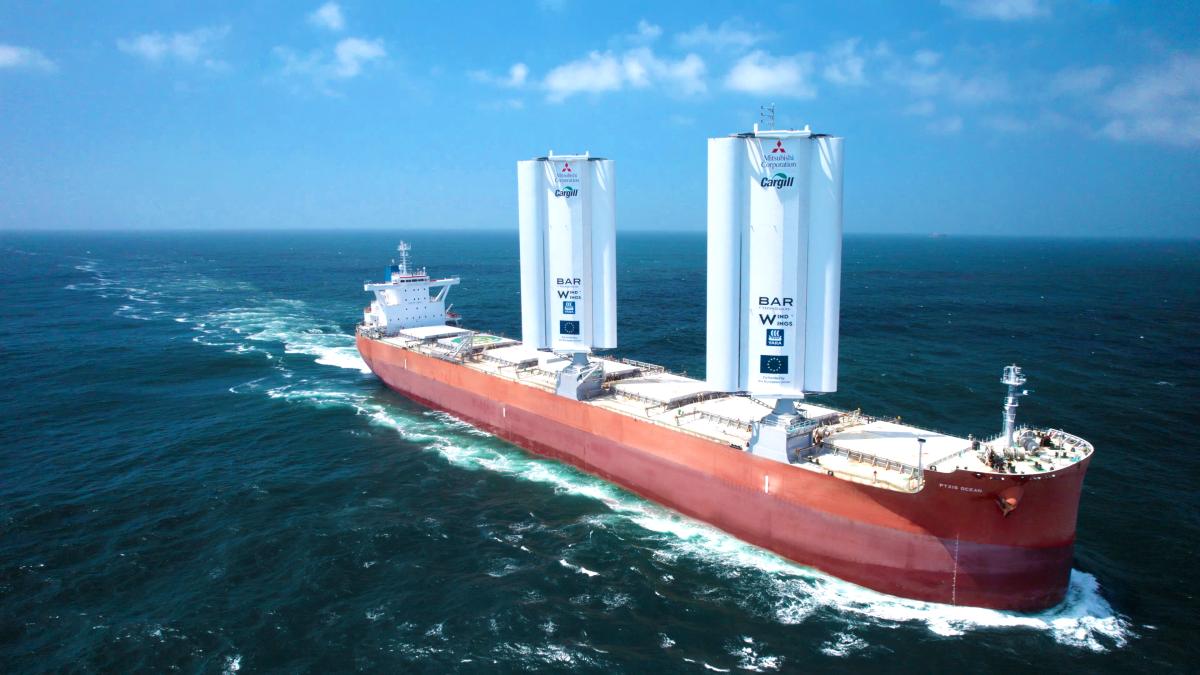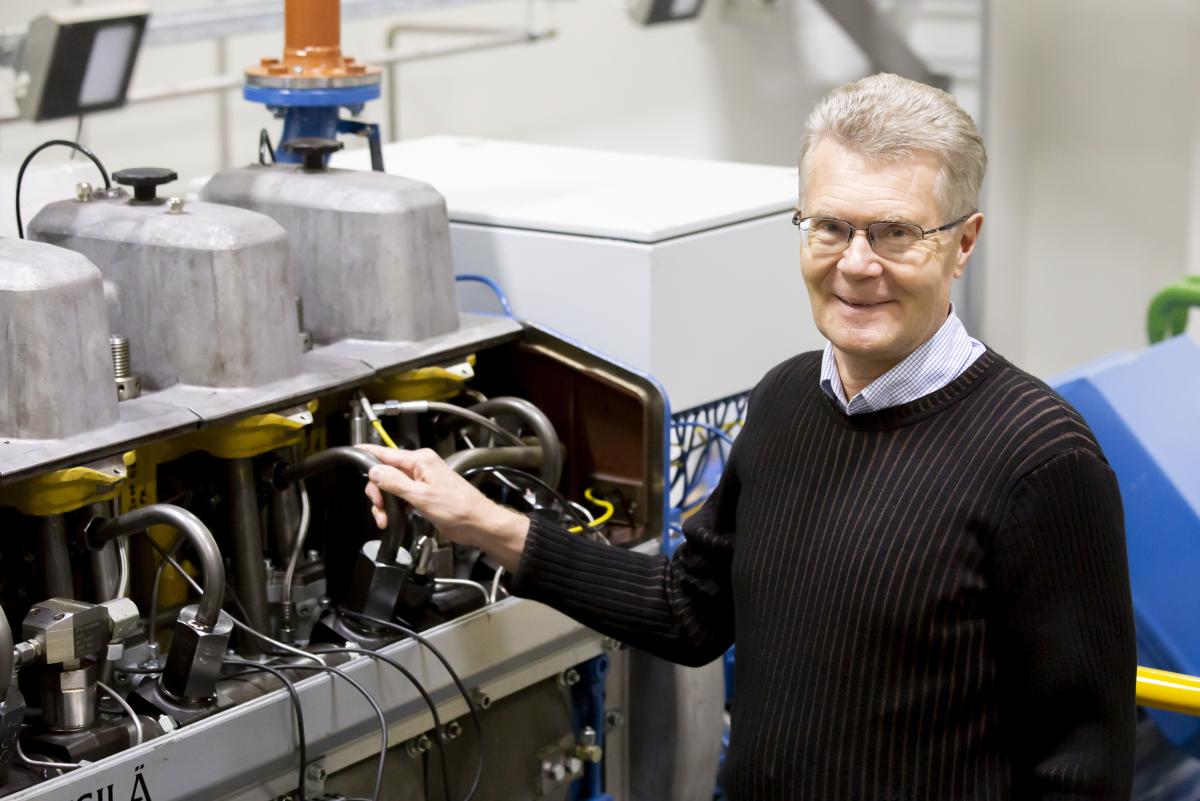Zero-emission ships are the future, but every ship in the global ship stock cannot just be replaced in one go. This means that solutions must also be developed for existing ships. The three-year project CHEK – deCarbonising sHipping by Enabling Key technology symbiosis on real vessels concept designs (2021–2024) led by the University of Vaasa is a lighthouse for low-carbon shipping. The solutions it develops combine new vessel designs and technologies that can be installed on existing vessels.
The project’s multidisciplinary consortium develops and examines solutions that improve the energy efficiency of ships and reduce carbon dioxide emissions. In doing so, it supports the objective of the International Maritime Organization (IMO) to reach net-zero greenhouse gas emissions from shipping around 2050.
– The biggest challenge in the development of zero-emission vessels is not so much the development of new technologies, but rather the integration of several different technological innovations that already exist. By bringing leading innovation companies together, we will be able to remove these obstacles and develop very interesting synergy solutions, says Suvi Karirinne, coordinator of the CHEK project and director of the Vaasa Energy Business Innovation Centre (VEBIC) at the University of Vaasa.
Project recognised by the European Commission
The CHEK consortium includes a wide range of experts in relevant fields, a total of 15 contributors: two universities, several shipping companies, a classification society, technology companies specialised in ship design and energy technology, as well as other smaller technology companies. The project receives funding from the Horizon 2020 programme of the EU. In an EU project of this scale, seamless cooperation is important, and as the coordinator of the project, the University of Vaasa plays a key role in facilitating cooperation.
Hardly any projects can be completed without coming across some challenges, but the main thing is to learn from the challenges and improve. What is special about the CHEK project is that new innovative technologies are tested in a real environment, that is, they are installed and tested on existing vessels that operate as normal. This has created unique demands because the implementation of the project has been affected not only by the project schedules and resources but also by the ships’ and shipyards’ own schedules. Both the COVID-19 pandemic and the current inflation have increased the challenges, but the project management experts of the coordinating VEBIC team have ensured that the project is steadily moving forward.
– Acting as the coordinator has significantly developed the university’s and VEBIC’s competence in the management and administration of large-scale research projects. Our team is in contact with the consortium partners on a daily basis to resolve any challenges as quickly as possible and before they become bigger problems. The project is a great opportunity for us to study and promote the reduction of greenhouse gas emissions from heavy transport and shipping and to combat climate change while promoting expertise in the field, Karirinne says.
The development, integration and introduction of new sustainable technologies is important in itself. In addition, the large-scale project will create new business and work for the project partners as well as European industry, and it will enable green economic growth in the region.
This sustained work and effort has also received well-deserved attention, as the European Commission recently recognised the project for its contribution to more sustainable shipping. The Commission entitled the CHEK project a Research and Innovation Project Success Story.
Curbing emissions with innovative solutions
How do the innovations which have been developed in this successful project work in practice? The technologies developed in the project will be tested e.g. on a Cargill bulk carrier using sails to harness wind power. In addition, an MSC Cruises passenger ship’s design includes a hydrogen-powered marine engine which is tested in a laboratory.
In addition to the development and testing of technologies, data from vessels play an important role. The data can be used to draw conclusions about how much these technologies can save fuel or improve energy efficiency. By combining innovative technologies, it is possible to eliminate 99% of the greenhouse gas emissions of a ship, achieve energy savings of up to 50%, and reduce black carbon emissions by more than 95%.
Not only will new technologies be added to the ships, but the new design platform developed in the project, the Future-Proof Vessel (FPV) Design Platform, will support their logical implementation. The platform combines the new technologies so that they work well with each other. The design platform also considers the different purposes of vessels.
With the new ship design method, the results of the two test vessels can also be applied to other types of vessels, such as tankers, container ships, other cargo vessels and car ferries.
Wind in sails and hydrogen in engines
In autumn 2023, the project reached an important milestone when Cargill’s Pyxis Ocean, the world’s first cargo ship with wind sails, set sail towards Paranaguá, Brazil. The sails, which are used to harness wind power, reduce fuel consumption and carbon dioxide emissions. It is still too early to draw any detailed conclusions about the performance of fixed sails, but the first test results of the technology have been encouraging.
– The vessel’s journeys are monitored for seven months. This provides an opportunity for testing, maintenance and learnings based on both the information we have collected and the feedback from the ship’s crew, with very valuable results, Karirinne says.
Another important part of the project is the development of a new type of hydrogen-powered marine engine concept by Wärtsilä. Researchers of energy technology at the University of Vaasa are involved in developing and designing a hydrogen fuel system prototype for internal combustion engines.
– Researchers of energy technology at the University of Vaasa participate in the development of a hydrogen-powered marine engine and its fuel system. The aim is to build a full-scale hydrogen engine prototype, which will be tested in Vaasa. The fuel system being developed also enables the use of hydrogen in the combustion engine laboratory of the University of Vaasa’s research platform VEBIC. The system is designed so that it also serves fuel cells, if necessary, and allows the use of other gases, says Seppo Niemi, professor of energy technology at the University of Vaasa.
Proving the benefits of the technologies is the goal
In this project, several technologies have been developed together with partners: e.g. Silverstream Technologies’ air lubrication system, HASYTEC’s ultrasound anti-fouling hull prototypes, and Climeon’s waste-heat-to-power technology. In addition, itinerary optimisation technology produced by MSC Cruises allows ship operators to plan routes that take account of environmental performance as well as commercial and technical demands.
The green technologies created in the project have already been adopted for ships other than the test vessels. Bulk carriers and cruise ships have been fitted with ultrasonic anti-fouling devices and equipped with route planning systems that consider the prevailing atmospheric and maritime conditions to provide the most efficient route.
– Our goal is to show the effectiveness of integrated CHEK technologies in improving energy efficiency, cutting fuel consumption, and reducing emissions before the end of the project, Karirinne says.
The project aims to prove the effectiveness to stakeholders who are interested in investing in new technologies. The consortium will implement technology-specific workshops and continuous communications with key stakeholders, and the project will include the 2030 and 2050 scenarios for the deployment of CHEK technologies.
– The project partners have already been in contact with potential customers, and at the level of individual technologies, we can see interesting opportunities for utilisation, Karirinne states.
Hydrogen raises its head
The energy transition research of the University of Vaasa and its research platform VEBIC has taken major steps forward with this project by focusing on the study of alternative fuels, such as hydrogen, and how they can be used in engines.
Thanks to the CHEK project, the University of Vaasa will soon have full-scale facilities for studying hydrogen-powered engines. This will allow the university to continue to develop new types of engines to optimise them and demonstrate hydrogen-based power generation.
The university also recently received additional financing when the Finnish Parliament’s distribution fund granted VEBIC EUR 450,000 for the development of hydrogen infrastructure.
– The grant will be used to develop the hydrogen research environment, and the resource now obtained will be used to invest in the implementation of a safe storage and fuel system needed for engine use. At VEBIC, hydrogen research focuses on energy system-level research, the importance of which will increase in the future together with the volume of renewable production of electricity, says Karirinne.
The research carried out at VEBIC is based on collaboration, especially with the companies of the energy cluster in the Vaasa region and other research organisations, which means that the hydrogen research environment to be developed will in the future also benefit companies and other actors in the Ostrobothnia region as well as the university’s international stakeholders.
**
CHEK - deCarbonising sHipping by Enabling Key technology symbiosis on real vessel concept designs
The three-year CHEK project, which started in June 2021, received EUR 10 millions of funding from the EU’s Horizon 2020 programme. In addition to the University of Vaasa, which leads the consortium, the contributors of the project include World Maritime University, Wärtsilä, Cargill, MSC Cruises, Lloyd’s Register, Silverstream Technologies, Hasytec, Deltamarin, Climeon, BAR Technologies, and Yara Marine Technologies.
From the University of Vaasa, the project participants are Suvi Karirinne, Päivi Haapalainen, Seppo Niemi, Maarit Mäkelä, Carolin Nuortila, Katriina Sirviö, Lauri Nyystilä, and Karita Luokkanen-Rabetino.
Further information on the project
Project page (uwasa.fi)
The project website


